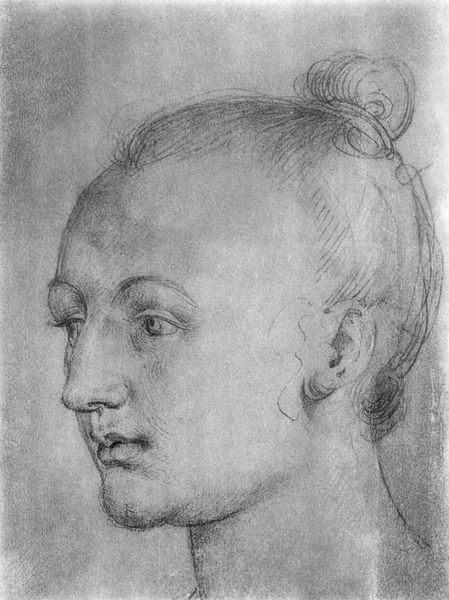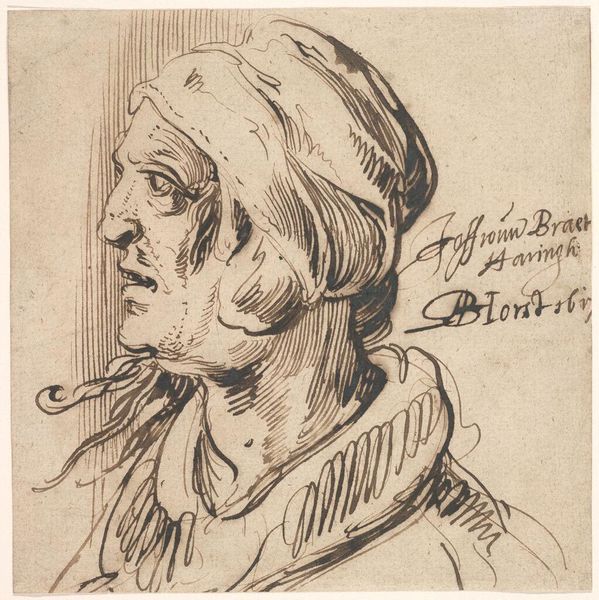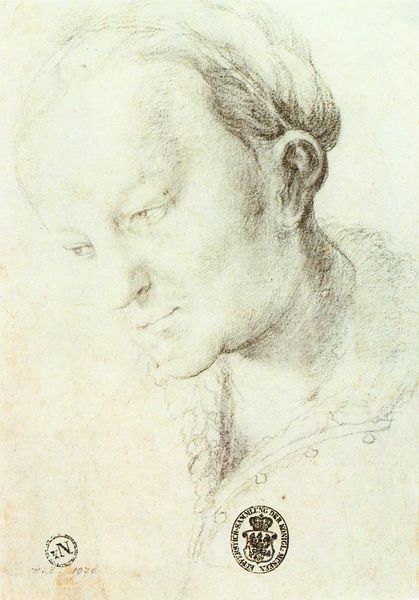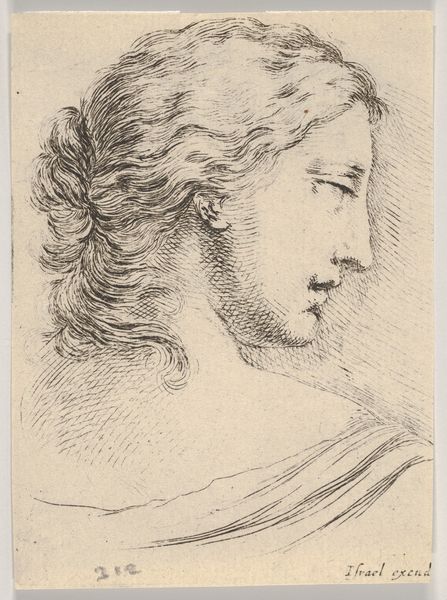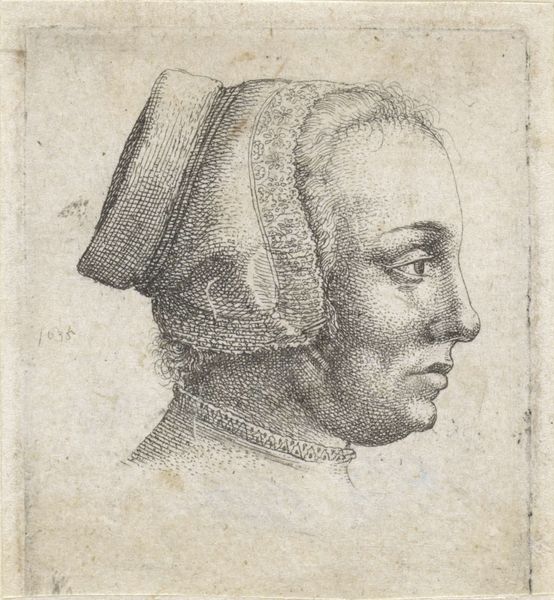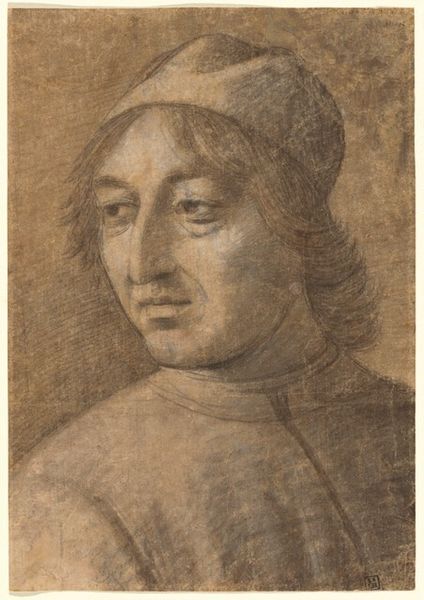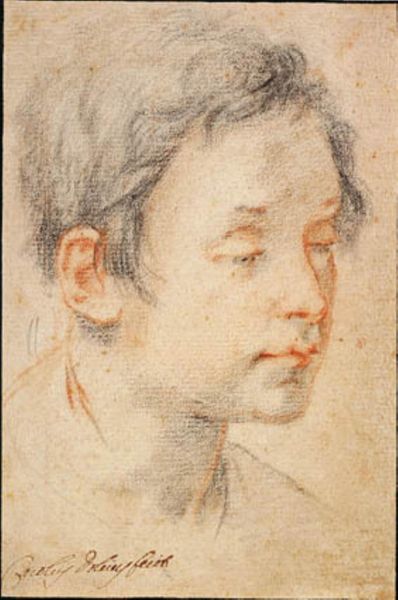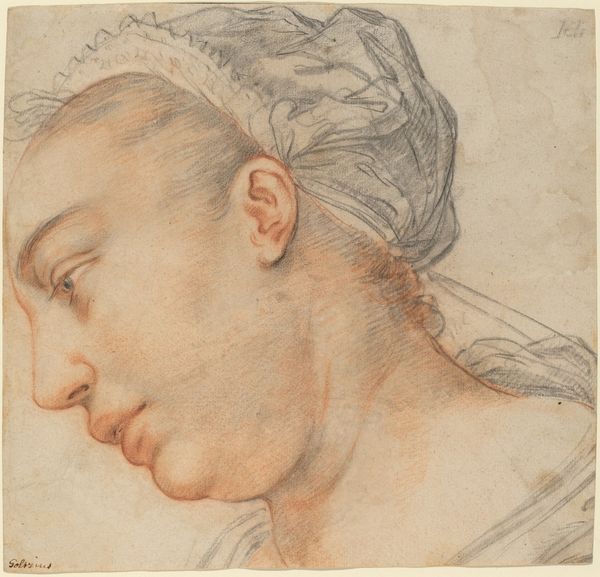
drawing
#
portrait
#
drawing
#
amateur sketch
#
facial expression drawing
#
light pencil work
#
head
#
pencil sketch
#
charcoal drawing
#
form
#
11_renaissance
#
portrait reference
#
pencil drawing
#
sketch
#
line
#
animal drawing portrait
#
nose
#
portrait drawing
#
facial study
#
italian-renaissance
Copyright: Public domain
Curator: Here we have Raphael's "Portrait of a Young Woman," a drawing dating back to around 1507, currently residing in the Uffizi Gallery in Florence. Editor: There's an immediacy to it, isn't there? A feeling of capturing a fleeting moment. The line work is so economical, but the downturned gaze speaks volumes. Curator: It is interesting to consider that this likely wasn’t intended as a finished work for public consumption, but a study. Look at the hatch marks creating shadow and volume. It invites consideration about labor involved and what drawings were used for in workshops in the Italian Renaissance. Editor: I agree, that the rapid lines and delicate shading add to this feeling that we’re catching her in a private moment. The soft contours create an image of youthful, yet mature contemplation. Notice her gaze, lowered, yet present, as if aware of the world but choosing a moment of inner reflection. Do you feel the headdress holds cultural meaning for that era? Curator: Certainly, her garments are not those of a working woman, her soft gentle fabric is not accessible by all. The style probably signified a specific social class, which is essential information, as clothing represents a material reality and a status symbol of that time period. Also notice the blank space, this may suggest an unfinished quality that could reflect labor shortages. Editor: Yes, I am struck by the gentle melancholy, that speaks volumes, particularly if we consider that the headdress worn symbolizes social status and even, as I suspect, availability for marriage, reflecting broader themes of womanhood, virtue, and expectations in the 16th century. This wasn’t merely an exercise in form; it reflects the social and psychological landscape of the era. Curator: Exactly. By examining the materiality of this sketch we not only appreciate the aesthetic decisions that define it, but also it becomes easier to unveil aspects of the production involved, along with the dynamics between labor, resources and culture during that time. Editor: This portrait invites the viewer to explore themes of beauty, introspection, and the cultural symbols that defined a woman's place in Renaissance society. Curator: Ultimately, it seems by delving into material production, a historical artwork can also promote cultural exploration of human dynamics. Editor: Beautifully put. This encounter provides us a window into human emotion, social context, and an enduring appreciation of form.
Comments
No comments
Be the first to comment and join the conversation on the ultimate creative platform.
